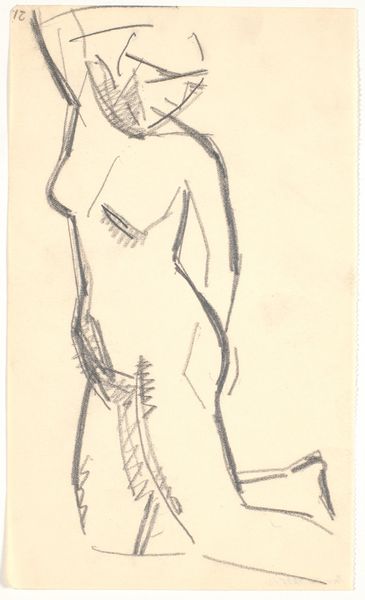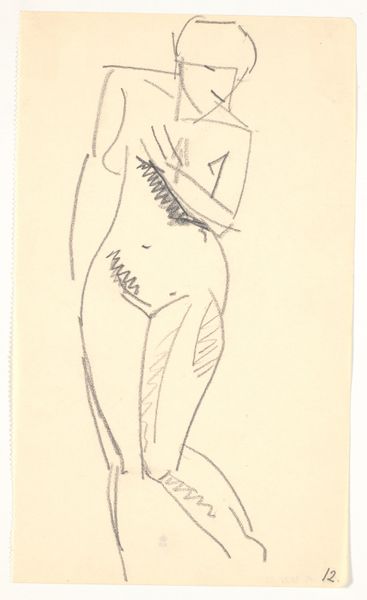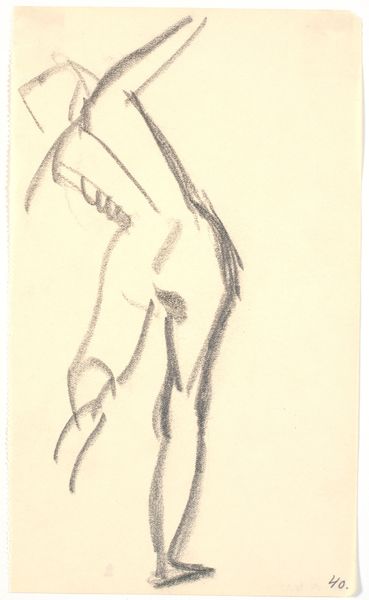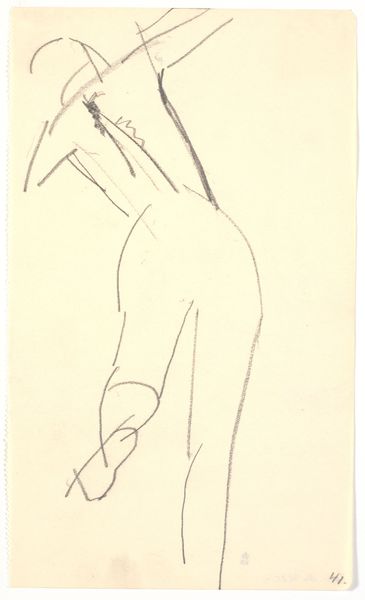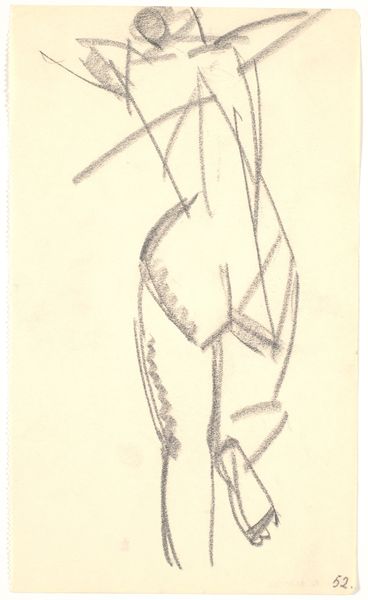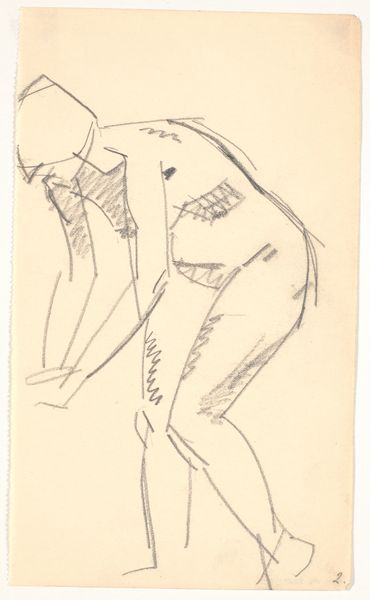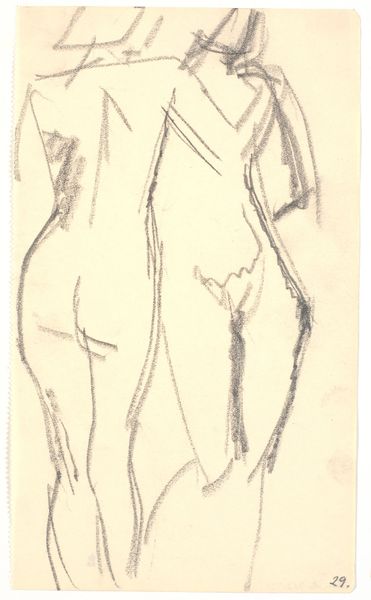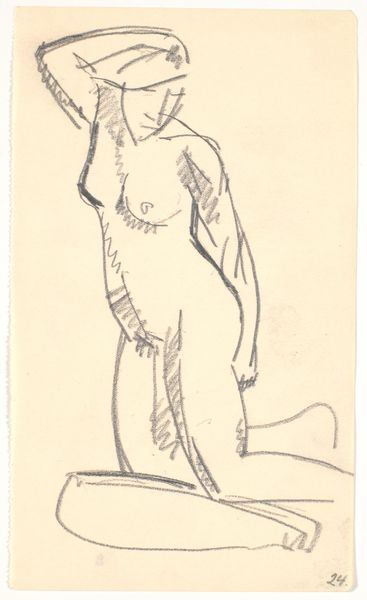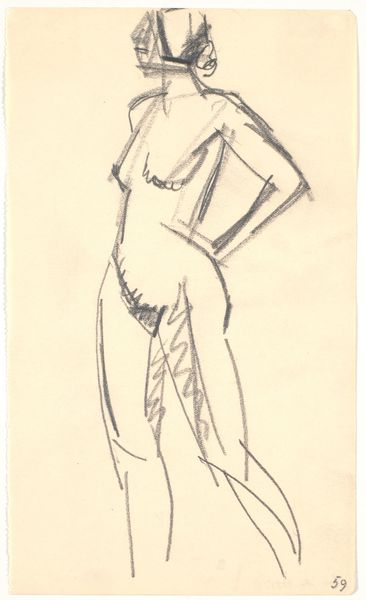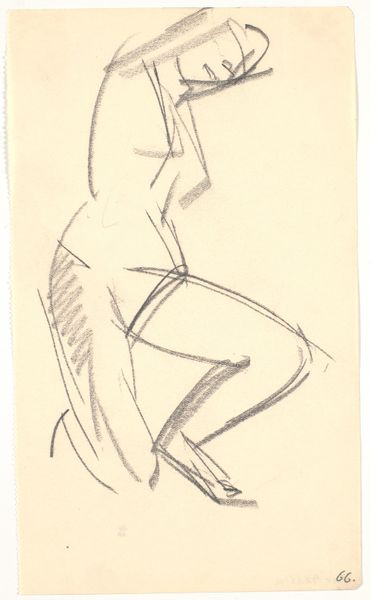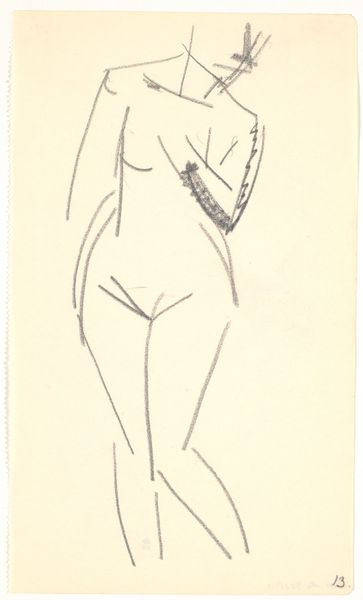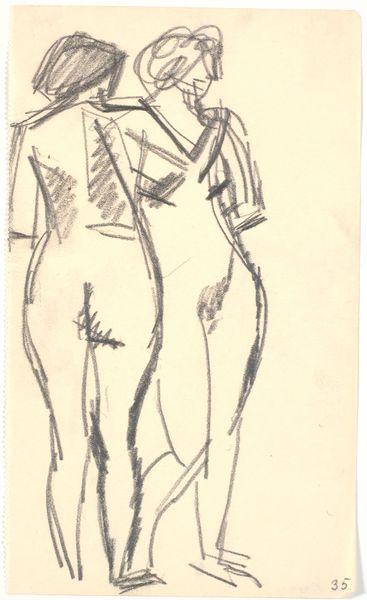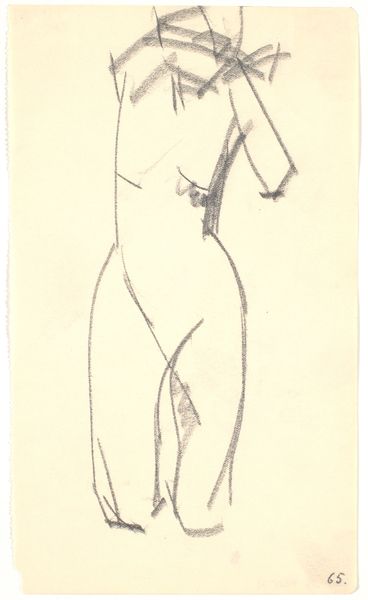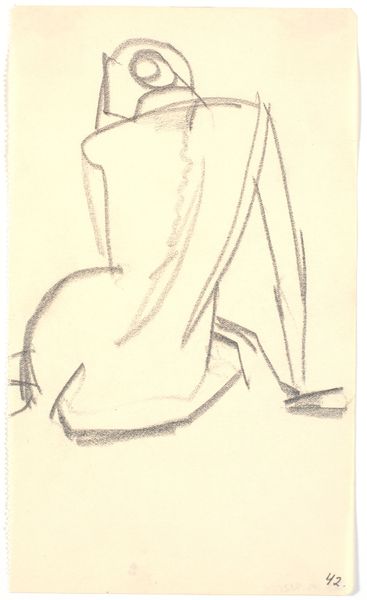
drawing, dry-media
#
drawing
#
figuration
#
dry-media
#
expressionism
#
nude
Dimensions: 209 mm (height) x 124 mm (width) (bladmaal)
Curator: Welcome, everyone. We’re now looking at "Knaelende model" by Karl Isakson, created between 1914 and 1915. It's a striking drawing currently held in the collection of the SMK, the Statens Museum for Kunst. Editor: It’s rather raw, isn’t it? A sense of urgency in the mark-making, the lines quite bold, yet vulnerable. I feel the sketchiness draws me closer. Curator: Indeed. Isakson was associated with early Expressionism. One must consider the social impact and public role of female representations. How do you think that movement influences our reception of this nude? Editor: It pushes beyond simple mimesis. Note how he uses charcoal or a similar dry medium, not to create a polished image, but to emphasize form, using simple semiotic means—contour and volume above all, but adding a hatch-mark field as well to imply some special significance, Curator: Exactly. During this period, the female nude was undergoing a period of reassessment. Representations of women were moving away from idealized portrayals of past eras toward greater frankness and perhaps a more grounded humanity, or perhaps more complicatedly towards "authenticity". What is your take? Editor: Interesting thought; certainly, this artwork doesn't indulge in academic prettiness, no Venus here! I like how he reduces the form to essential lines, and masses, but does not abstract. The pose feels momentary, caught, which invites a powerful intimate gaze. Curator: It does convey intimacy. And knowing it was created on the brink of enormous political shifts adds to that impact, I feel. I am curious about his focus on capturing emotion, reflecting an attitude that defied artistic convention. Editor: Well said. Beyond the historical framing, I think it succeeds because the artist uses such direct vocabulary of art – line, shape, tone - to compose and give form to its emotion. It makes it feel so immediate, immediate as drawing is in practice. Curator: This has been very insightful. Considering how Isakson presents the body within the confines of expressionist sensibilities helps contextualize not just the historical framework, but also the politics ingrained in image construction. Editor: And from the formal perspective, seeing it through that prism shows the power and the strength this image evokes on its own terms, thanks to those key qualities. It creates a singular statement of the period and by the author himself.
Comments
No comments
Be the first to comment and join the conversation on the ultimate creative platform.
